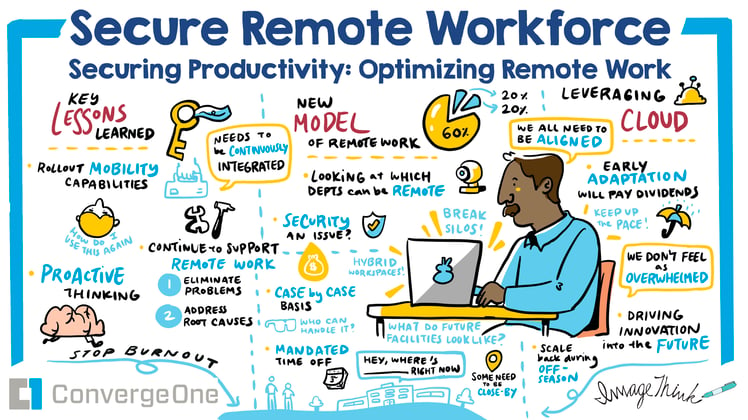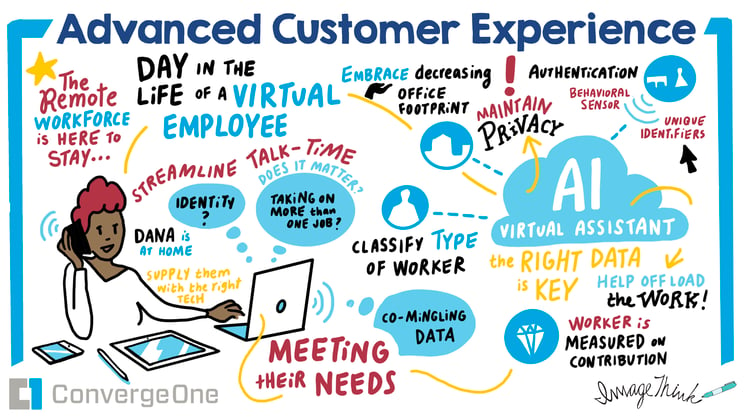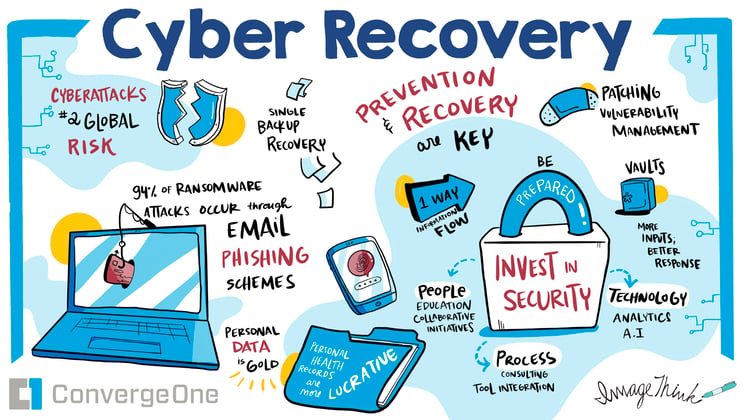A discussion with C1 customers and practice leaders
As businesses around the world manage an uncertain future, it’s crucial that companies create a new framework for how people work and embrace new technology and plan to boost security, collaboration and productivity. The C1 leadership team recently hosted a virtual Executive Exchange with over 50 key customer leaders to share ideas, best practices and perspectives to support growth strategies and drive future success, summarized here.
Looking forward into 2021, companies will need hybrid work models, flexible schedules and appropriate work setups, as well as comprehensive cyber security tools, employee education and cross-company collaboration. With the future uncertain, budgets should be focused on security, productivity and collaboration.
Key considerations:
1. The future will require supporting new models of work
Companies have aggressively rolled out mobility capabilities during the pandemic, as well as new remote collaboration tools. Companies also doubled their cloud adoption rate. Going forward, organizations must continue to plan for an uncertain future, rethinking how and where people work.
The new rule is 60-20-20. That means 60% of employees may be hybrid, while 20% work entirely from home and another 20% are in the office full time.
– Tim Femister, Vice President, Digital Infrastructure, C1

Keep in mind, however, that not every employee has the ideal work-from-home setting. A call center agent, for instance, may work from the kitchen table in a one-bedroom apartment with poor Internet bandwidth, says Kathy Sobus, who leads customer experience strategy at C1. Businesses must equip employees with the right keyboards, monitors and broadband setups and add more flexibility to boost productivity. This may mean mandated time off to avoid burnout, staggering remote work hours into smaller chunks throughout the day or adding gamifying tools to motivate and keep employees engaged.
2. An influx of customer inquiries requires new approaches to offloading work
About half of C1’s customers have deployed artificial intelligence and virtual assistants, and the success has been mixed. Those who have benefited from self-service tools allow people to get information quickly without complicated decision trees and website searches and they meet customers where they are. Customers say it’s important to not divert all workload to one channel over another but to evenly distribute those inquiries to meet customers where they are. The key is to allow customers to self-serve whenever possible.

3. Security will become even more important
Ransomware attacks have exploded with the switch to work-from-home. As many as 94% of ransomware attacks come through phishing emails, and because most companies pay the ransom to reclaim data, it’s become a $20 billion illegal industry. In addition, as much as 70% of social engineering is coming through contact centers, in which thieves fish for information, gain access and change passwords. Businesses should train employees on these threats monthly and boost education via company blog posts and intranet pop-ups. Biometric authentication, such as facial recognition or thumbprint recognition, could also help remote call center agents protect sensitive data.
4. It’s still possible to beat the cyber thieves with disaster recovery mechanisms
Cyber vaults can expand your backup landscape and cyber recovery solutions provide step-by-step recovery, reimaging, data analytics and more. Yet just 1% of companies have cyber recovery solutions in place. C1 customers rely on such tools as Cisco AMP +Umbrella, Arctic Wolf, AlertLogic, Rapid7 and Cisco SecureX, which provides a dashboard for all your security products and forensic data. “The more inputs an organization has, the better they’ll be able to handle a breach,” says Chris Ripkey, C1’s senior director of cyber security. “We also created a new reference architecture for cyber security recovery which helps prevent a wider attack.”

By partnering with our customers and understanding their needs, now more than ever, C1 delivers progressive, innovative solutions that connect people with purpose.





